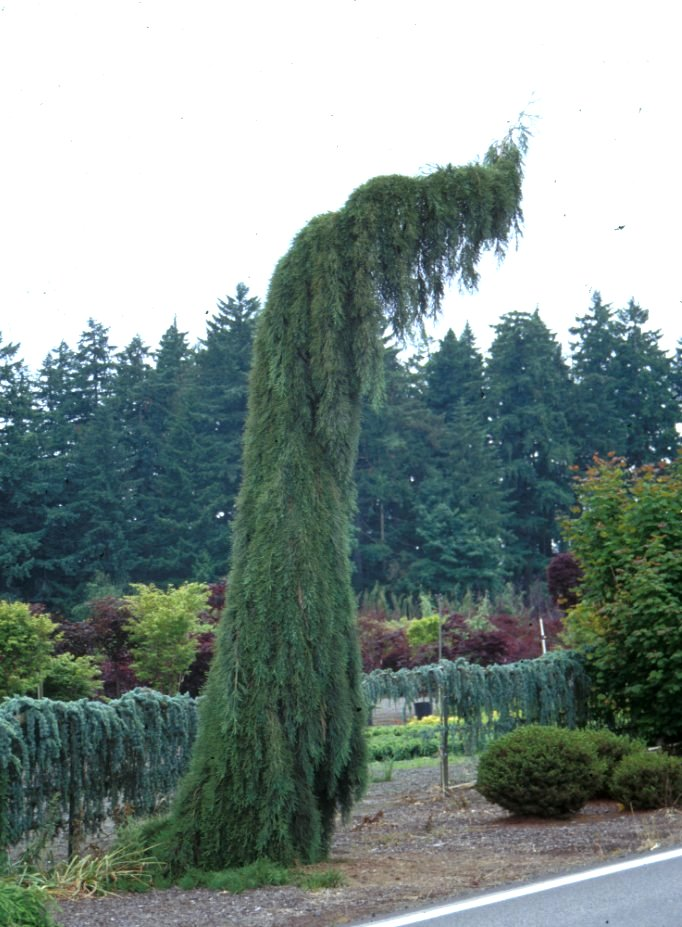| Botanical Name: Sequoiadendron giganteum 'Pendulum' | |
| Common Name: Weeping Sierra Redwood |

-
Anatomy
-
Culture
-
Design
Plant Type
Tree, Conifer
Height Range
12-25'
Flower Color
n/a
Flower Season
n/a
Leaf Color
Blue Green, Dark Green, Grey Green
Bark Color
Brown, Red
Fruit Color
Brown
Fruit Season
Fall, Persistent
Sun
Full, Half
Water
High
Growth Rate
Slow
Soil Type
Clay, Loam
Soil Condition
Average, Rich, Well-drained, Moist
Soil pH
Acid, Neutral
Adverse Factors
n/a
Design Styles
Formal, Japanese, Woodland
Accenting Features
Silhouette, Specimen, Unusual Shape
Seasonal Interest
Winter, Spring, Summer, Fall
Location Uses
Background, Shrub Border, Walls / Fences
Special Uses
Small Spaces
Attracts Wildlife
Birds
Information by: Stephanie Duer
Photographer:
Photographer:
-
Description
-
Notes
Weeping Sierra Redwood has is a slow-growing, evergreen tree with an unusual weeping, pendulous form. Its branches hand nearly parallel to the trunk and are densely leafed, giving it a nearly furry appearance. Foliage is a bright green to blue-green color. It may need to be staked in order to maintain a desired habit. Use as an accent or focal point. A slow-grower to about 25 feet tall, and 3 to 4 feet wide, depending on how it is trained.
This Sequoiadendron grows best in deep, rich, moist soils of an acid pH beneath full sun exposure. While it tolerates some drought or heat, it is more adaptable to cool, dry climates. Requires weekly watering and the maintenance of a thick layer of mulch.